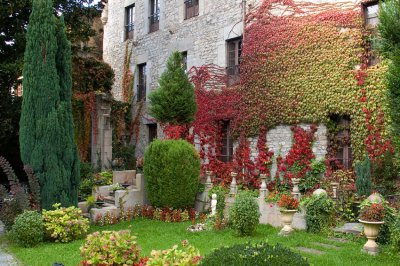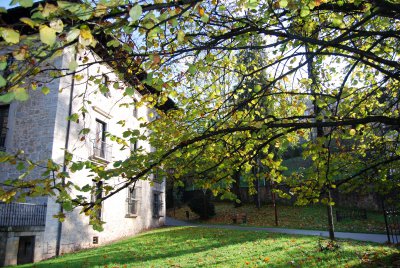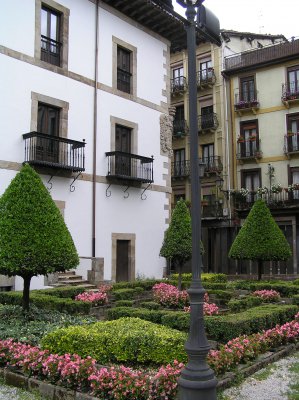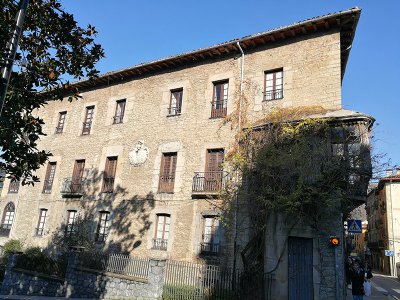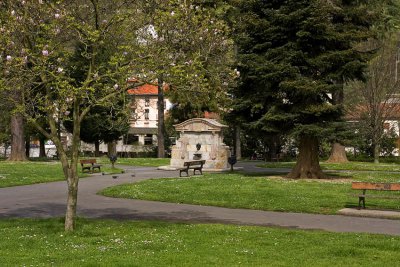Bergara’s gardens have had an important part to play in the town’s history.
And they still have in local urban development. Bergara is surrounded by a veritable green belt. Even in the more built-up areas, gardens and parks are an ever-present feature.
Some are thriving; while others have been transformed by the town’s urban development in recent decades. In view of the unique and valuable legacy they provide, Bergara is working hard to recover them for people’s enjoyment.
A must is a visit to the little gardens on Komenio Street, which decorate the south facades on the Ondartza and Olaso towers.
The valuable heritage of the garden at the Olaso tower
The Olaso Tower, officially declared a listed building, has been granted the highest level of protection. In its entirety, this garden is one of the most attractive places in Bergara. This garden, located in the heart of the old quarter, also contains unique features of great historical value, with three outstanding highlights:
- The coat of arms belonging to the Society of Jesus - Compañía de Jesús, which dates back to the time when the Seminary was a Jesuit College, and which following their expulsion in 1767 was removed from the college’s façade (the Seminary’s original facade, as the current one dates from 1867).
- The coat of arms above the Jesuits’ own one is a finely worked Baroque piece that probably dates from the end of the 17th century.
- There is a magnolia standing at the end of the garden. This tree has officially been declared one of a kind, and it enjoys protected status. Indeed, the Basque Government’s Decree 265/1995, of 16 May, introduced the figure of “unique tree” with protected status for several specimens in the Basque Country.
Better known for the chapel of Santa Ana or for the preaching of St. Francis Borgia, the Errotalde garden is a 19th century creation that holds many surprises.
and despite the many changes it has undergone, it still retains plant specimens and architectural features of interest. Good examples of these are its spectacular yew tree (Taxus baccata) and the bridge over the Aranerreka dyke, at the back of the palace.
Although it is small, it might well be the most popular.
It is the first market garden belonging to a 17th century palace to be turned into an ornamental garden.
What’s more, following the retro fashion of the time, it was laid out in imitation of the Renaissance style. This garden is listed as a Cultural Site, under the category of Monument, in the General Inventory of Basque Cultural Heritage.
Like the one at Errekalde, this one was also laid out in the 19th century. Today it is split down the middle by a road, and you can no longer appreciate the expanse (two hectares) it used to cover.
It is home to trees of magnificent bearing, some of which were planted at the end of the 19th century, as is the case of its spectacular Himalayan cedar (Cedrus deodara).
The Seminary’s present garden dates from the early 20th century, when it replaced the old English garden.
The square Plaza Munibe provides an excellent vantage point for admiring the view.
The adjacent information panel shows you what the old garden looked like, providing an accurate depiction of the functional distribution of the Royal Seminary’s plant and fruit and vegetable gardens in the 19th century.
This picture gives us an idea of what those gardens looked like before they disappeared.
7. Usondo Park
As its name suggests, this is more of a park than a garden, and is very popular with locals. Laid out in the early 20th century as the garden for the Laureaga Palace, it did not open to the public until the 1980s.
Although it has lost some of its original features, such as the pond, the area is still home to trees that were planted over a hundred years ago: the silver fir (Abies alba), the thorny locust tree (Gleditsia triacanthos), etc.

